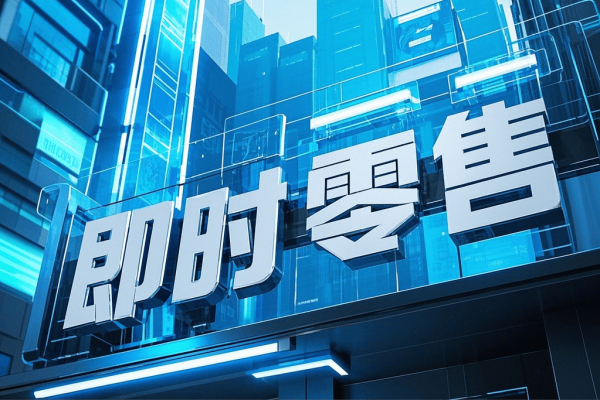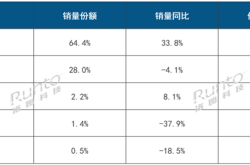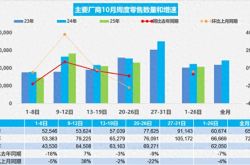The "Instant Retail" Battle: The Dawn of the Industrial Internet
![]() 06/23 2025
06/23 2025
![]() 653
653

The current food delivery war is not merely a struggle for traditional traffic but the inception of a new paradigm. This is evident in Liu Qiangdong's recent speech. On June 17, the founder and chairman of JD.com Group revealed in a sharing session, "In a month, JD.com Delivery will unveil a business model distinctly different from Meituan's. We anticipate this model will empower consumers to purchase cost-effective and safe food." He emphasized that JD.com's focus lies in the fresh food supply chain underpinning food delivery, "as the entire business of JD.com Group revolves around serving the supply chain."
Liu Qiangdong's words suggest that JD.com's foray into food delivery transcends traditional delivery services. Instead, it aims to leverage food delivery as an entry point to revolutionize and upgrade the supply chain. Historically, internet players have focused on building platforms and hubs, abstaining from delving into industrial and supply chains. Thus, when JD.com entered the food delivery fray, many perceived it as another market and traffic battle. Liu Qiangdong's speech directly countered this notion, clarifying that JD.com's food delivery ambitions extend beyond market share and traffic—they are aimed at the supply chain.
In my view, when internet players engage with the supply chain, they seek ways to deeply integrate with the industry, uncovering new development avenues. Whether we term this as the fusion of virtual and real, or decentralization and de-platformization, these are genuine manifestations of the industrial internet. As the flames of instant retail, ignited by the food delivery war, blaze brighter, it becomes evident that instant retail is emerging as a new competitive arena for internet players—a clear indication that the era of the industrial internet has truly dawned.
Behind Instant Retail: The Convergence of Virtual and Real
The entry of players like Meituan, JD.com, and Taobao into instant retail may seem like another battleground for internet competition. This perception is not entirely incorrect. Superficially, the instant retail battle is among internet players. However, delving into its essence reveals that instant retail is not solely an internet player's domain. Behind instant retail lies a broader trend towards the integration of virtual and real.
For internet players, the game is not just about building platforms and hubs; it's about participating in the distribution process from physical merchants to consumers. In other words, internet players are increasingly involved in the industry's operational processes, becoming an integral part of the industry rather than mere platforms or hubs. If we analyze and summarize this phenomenon, virtual-real integration is the most fitting description.
In this process, internet players actively participate in operational processes, bridging the gap between goods and consumers, and better connecting supply and demand. Notably, while we see the involvement of delivery workers, internet players' virtual assets, such as data and platform resources, are also integral. This participation transforms instant retail from traditional food delivery into a novel entity.
Defining this novel entity, the industrial internet stands out as the most appropriate term. The industrial internet involves internet players' participation, contributing to and empowering the real economy. Taking Liu Qiangdong's mention of the "supply chain" as an example, it signifies a profound transformation and upgrade of the industry, spearheaded by internet players leveraging resources accumulated during the consumer internet era. From this perspective, instant retail is not synonymous with food delivery but a true representation of the industrial internet.
Behind Instant Retail: Responding to Consumption Upgrades with Industrial Upgrades
As the mobile internet era deepens, especially with the peaking of traffic dividends, a new shift led by consumption upgrades is underway. For all players, finding ways to respond to consumption upgrades and establishing a new equilibrium to unlock development breakthroughs has become a trend. Whether fully embracing AI or innovating concepts like new Chinese fashion and Generation Z, players seek strategies to adapt to consumption upgrades.
Summarizing players' approaches to consumption upgrades reveals a common theme: responding with industrial upgrades. For instant retail, it embodies players' efforts to address consumption upgrades through industrial upgrades. As the internet's influence deepens, consumers seek a "buy now, get now" experience to swiftly fulfill their needs. Traditional e-commerce models fall short in meeting this demand. Internet players' answer lies in establishing connections with offline stores or building complete supply chains to meet consumer demands—a response to consumption upgrades through industrial upgrades.
This response encompasses a comprehensive upgrade spanning both industrial and consumer ends. The industrial internet is the direct manifestation of this upgrade. Unlike the consumer internet era, which focused on transforming consumer behavior and patterns using "Internet+", the industrial internet focuses on industrial upgrades. The term "internet" in industrial internet encompasses not just the internet but new technologies and models derived from it. Ultimately, the essence of the industrial internet is responding to consumption upgrades with industrial upgrades, echoing instant retail's internal logic. Viewing instant retail through this lens reveals it as a true representation of the industrial internet and a sign of its transition from ideal to reality.
Behind Instant Retail: Redefining the Roles of All Parties
Discussing the industrial internet often highlights a profound and comprehensive "reconstruction" and "remix" of industry roles. Bluntly, roles and positions we once knew are undergoing significant changes in the industrial internet era. The supply and demand sides are no longer traditional entities.
This is evident in instant retail. Traditionally, internet players act as intermediaries. However, Meituan and JD.com's performances show they are no longer mere intermediaries but active participants. Their involvement in delivery and supply chain building underscores their transformed roles. Thus, in instant retail, internet players' roles have been redefined.
This reconstruction extends to traditional offline merchants. Traditionally seen as suppliers, these merchants are now more involved in the production process due to instant retail and the redefining of roles. Consumers, too, are no longer passive; they produce demand data, empowering the upstream industrial end for upgrades and transformations.
This analysis reveals that in instant retail, all parties' roles are undergoing a profound reconstruction. This is a true representation of the industrial internet. Unlike the consumer internet era, which focused on eliminating intermediaries for efficiency, the industrial internet redefines roles to derive new industries, models, and equilibriums, initiating a transformative shift. This explains the industrial internet's vast imagination space.
Conclusion
As the consumer internet's glow fades, we witness the dawn of the industrial internet era. The instant retail battle, particularly with its supply and industrial chain upgrades, signifies the industrial internet's true emergence. In a sense, instant retail is the industrial internet's "first ray of sunshine." It showcases supply and industrial chain upgrades and the new industry-demand equilibrium. As instant retail deepens, triggering industrial upgrades, the industrial internet will unleash its potential, ushering in an era far more imaginative than the consumer internet.








